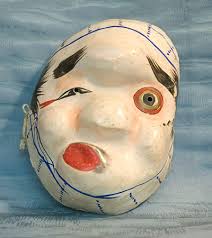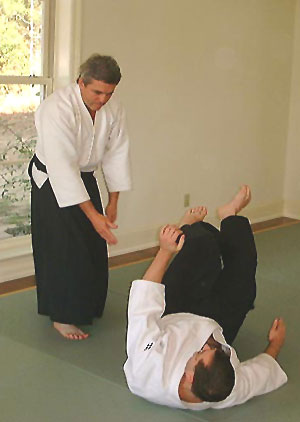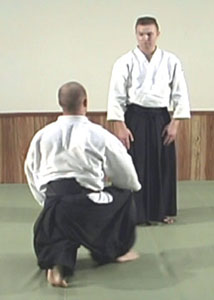"Cool! Congrats on getting some students up to shodan. Your work on the basics and fundamentals can really take off now."
Is there anything beyond basics? If so I have not found it yet. It just gets more and more basic as I train.

After slicing up the film of my guys demonstrating the 17, I noticed they had a real hard time moving from the center during testing conditions. Something they normally do fairly well. One of the basics.
One of the things we practice a lot at the Dojo is posture -nothing more basic than that! Usually good posture indicates moving from the center, and letting your weight do the work. One of the tell tale signs that ineffective Aiki is going on is the feet stop moving and the upper body hunches forward. Basically what is happening, is the mind says "throw now"...the body braces...and the muscles of the upper body fire to make the throw happen.
So it makes me wonder what changes in the testing conditions...that makes someone comfortable moving from their center, into someone who uses muscular force? We are all guilty.
pressure, intent, desire to throw....all screw up a perfectly good aiki moment.
When Lowry Sensei came down, he spoke a lot about Hazumi and Ikioi.
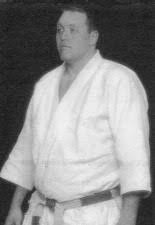
Hazumi -- defined in kudo's "judo in action" as a the force/ momentum that acts on the guy from your entire center moving ie. the effect of one center of gravity on another.
Ikioi --is the impetus of an isolated part of the body acting on the person.
In my current practice I am still guilty of too much muscle (ikioi) and not enough hazumi, just like my guys.
I really feel like the key from switching from being a Ikioi player to a Hazumi player is by switching intent.
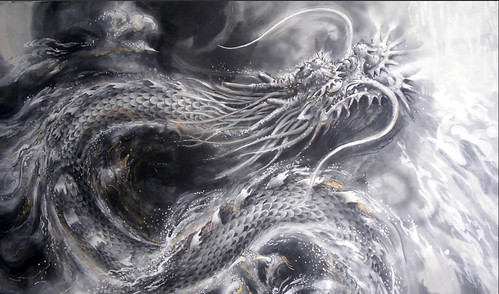
Here are some of the things I have been trying to retool in my head to change my intent - back to the basics of the art.
- I must no longer desire a goal in an encounter
- I must lose my attachments to ideas of victory.
- I must stay sensitive to where my partner wants to move me...then I must go there on my terms with correct body structure.
- for some reason the idea of "surfing the energy" has been on my mind lately, rather than trying to control or do anything in particular.
- I must stay true to the principles of the art at all times. I will never fear defeat in the safety of the dojo. If my Aiki fails in an encounter...then ukemi is a way to reestablish the harmony.

So these are all the basics I have heard since my first day in the dojo. I guess it is one thing to hear them, and another to do them and have them so internalized you have no other choice but to move in harmony with them.
All these basics get kind of complicated. These basics are too advanced!


